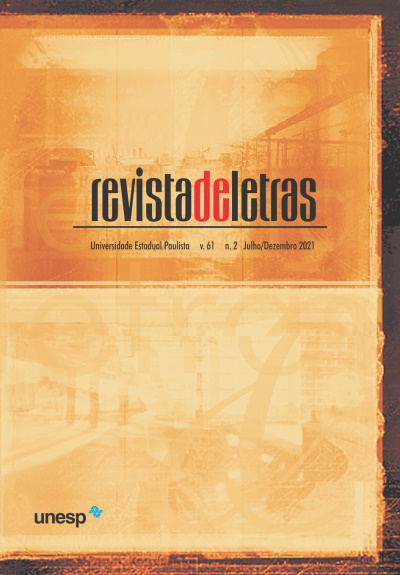The “thing” in uncanny complexity
strangement and perception in Clarice
Keywords:
Perception, depth, uncanny, Clarice Lispector, literature, paintingAbstract
This study aims to establish a dialogue among three authors and thinkers: clarice lispector, sigmund freud and maurice merleau-ponty, specifically. this is an attempt to read and approximate these authors, without neglecting to bring other scholars who corroborate with the reflection brought in this study. the section proposed here is based on some of clarice’s texts from the book para não esquecer. the goal is to think about how the object (the thing!) in the world, in an instant of acute perception, can show itself as shifting, vivid, and uncanny (das unheimlich). at the moment when “the thing” suddenly materializes on the blank sheet of paper like brushstrokes on a canvas, also blank, which makes “the thing” the elusive language of literature, a language that takes place in the “non-place”. furthermore, in the interweaving of these authors in their approximations, we bring some very specific observations of the relationship between clarician’s literature and paul cézanne’s painting. the latter from merleau- ponty’s point of view, to intertwine it with image issues, also, based on jacques rancière’s Reflections when bringing the aesthetic regime of the image and the image as picturality, and in the proposal of both michel foucault and john berger. we can say that both issues contribute to thinking about the acute perception instant of the “thing” in uncanny depth in clarician’s literature, which is given in the brushstroke “of the thing”, in the fleeting instant.
Downloads
Published
Issue
Section
License
Os manuscritos aceitos e publicados são de propriedade da Revista de Letras. Os originais deverão ser acompanhados de documentos de transferência de direitos autorais contendo assinatura dos autores.
É vedada a submissão integral ou parcial do manuscrito a qualquer outro periódico.
A responsabilidade do conteúdo dos artigos é exclusiva dos autores.
É vedada a tradução para outro idioma sem a autorização escrita do Editor ouvida a Comissão Editorial.

